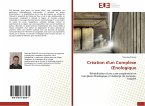The main aim of the author was to research some of the most characteristic examples of abandoned synagogues and sites having similar problems in the past or present, and to demonstrate some solutions, which could be used in the case of the synagogue in Subotica, Serbia. Those examples have been chosen from the nearest region around Subotica within the perimeter of about 200 km (Novi Sad, Szeged, Kecskemét, Timisoara, and Budapest), because of their geographic position, shared historic, multi-confessional and multi-cultural background and similar urban and architectural development that shows the best model for analysis. Using the help and experiences of the analyzed case studies the author made a general evaluation system in a form of a table, and an analysis of the spatial implementation of a possible new purpose and offered some guidelines for the program for restoration and rehabilitation of the synagogue in Subotica, a building of an outstanding heritage value.
Bitte wählen Sie Ihr Anliegen aus.
Rechnungen
Retourenschein anfordern
Bestellstatus
Storno








